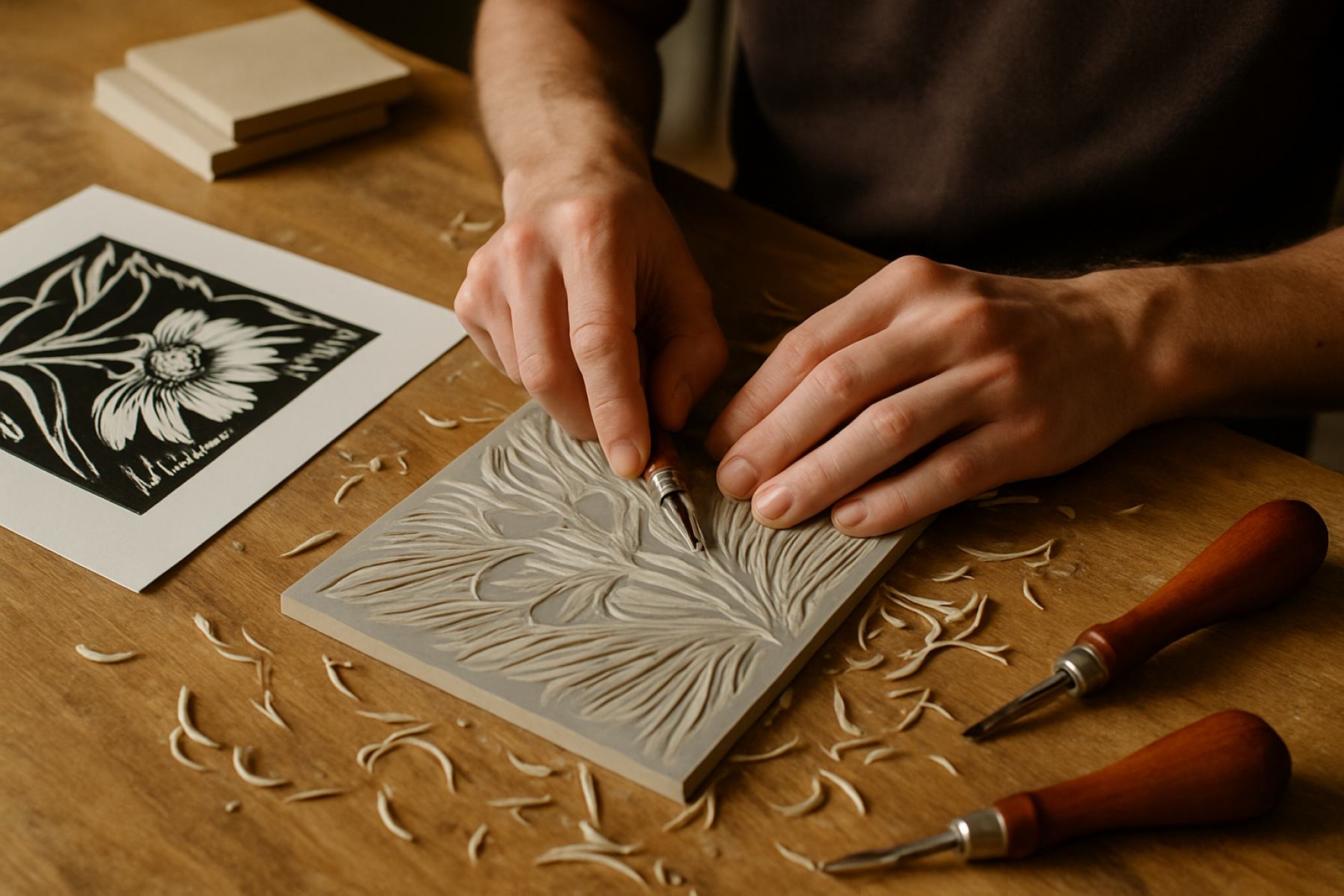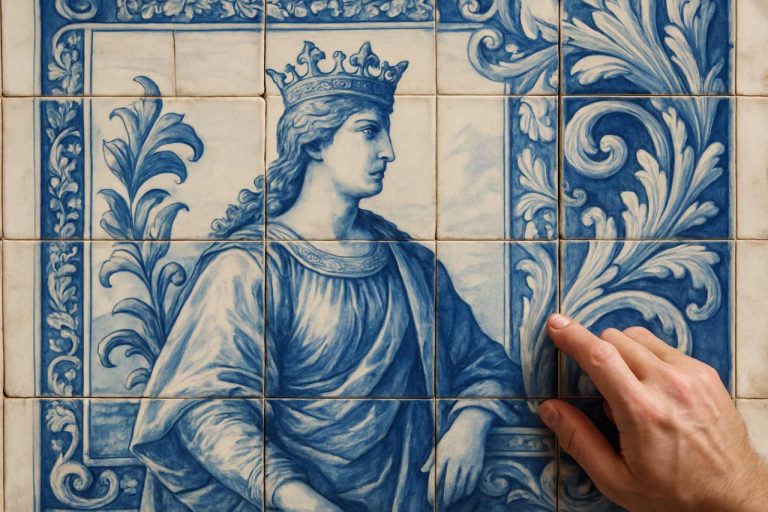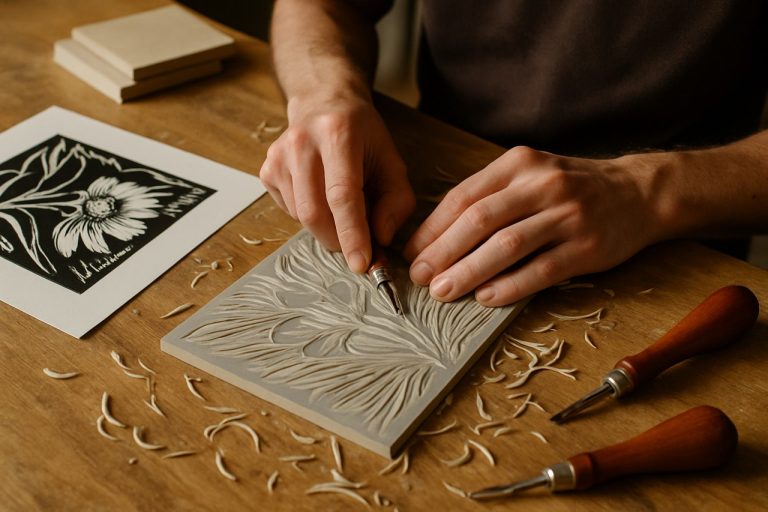
Linoleum Block Printing Unveiled: Explore the Timeless Craft, Tools, and Creative Possibilities of This Printmaking Phenomenon
- Origins and Evolution of Linoleum Block Printing
- Essential Tools and Materials Overview
- Designing for Linoleum: Patterns, Motifs, and Planning
- Carving Techniques: Safety, Precision, and Style
- Inking Methods: Achieving Consistent and Creative Results
- Printing Surfaces: Paper, Fabric, and Beyond
- Color Strategies: Single, Multi-Block, and Reduction Printing
- Troubleshooting Common Challenges
- Contemporary Artists and Innovations
- Sustainable Practices and Future Directions
- Sources & References
Origins and Evolution of Linoleum Block Printing
Linoleum block printing, often referred to as “linocut,” is a relief printmaking technique that emerged as a modern alternative to traditional woodblock printing. The process involves carving a design into a sheet of linoleum, rolling ink onto the raised (uncarved) areas, and pressing paper onto the surface to transfer the image. The origins of linoleum block printing can be traced back to the late 19th and early 20th centuries, coinciding with the invention and widespread use of linoleum as a flooring material. Linoleum, made from natural materials such as linseed oil, cork dust, and wood flour, provided a softer and more easily carved surface than wood, making it particularly attractive to artists and educators.
The earliest documented use of linoleum for artistic printmaking dates to around 1905, when German artists of the Die Brücke movement began experimenting with the material. These artists, including Ernst Ludwig Kirchner and Karl Schmidt-Rottluff, sought expressive, bold forms and found linoleum’s ease of carving ideal for their purposes. The technique quickly spread throughout Europe and North America, embraced by both avant-garde artists and art educators for its accessibility and versatility. By the 1920s and 1930s, linocut had become a recognized medium in its own right, distinct from woodcut, and was featured in exhibitions and art schools.
Linoleum block printing’s evolution was also shaped by its adoption in educational settings. The material’s affordability and safety compared to wood and metal made it popular in schools and community art programs. This democratization of printmaking allowed a broader range of people to engage with the art form, contributing to its enduring popularity. Notably, the British artist Sybil Andrews and her contemporaries at the Grosvenor School of Modern Art in London played a significant role in popularizing linocut during the interwar period, producing dynamic, modernist prints that showcased the medium’s potential.
Today, linoleum block printing remains a vital part of the printmaking tradition, practiced by professional artists and hobbyists alike. Organizations such as the Victoria and Albert Museum and the Metropolitan Museum of Art hold significant collections of linocut prints, reflecting the medium’s historical and artistic significance. The technique continues to evolve, with contemporary artists exploring new materials, tools, and digital processes while maintaining the core principles established over a century ago.
Essential Tools and Materials Overview
Linoleum block printing, often referred to as linocut, is a popular relief printmaking technique that requires a specific set of tools and materials to achieve precise and expressive results. Understanding these essentials is crucial for both beginners and experienced printmakers, as the quality and suitability of each component directly influence the final artwork.
Linoleum Blocks: The primary material is the linoleum block itself, typically made from a mixture of linseed oil, cork dust, and wood flour, pressed onto a burlap backing. Linoleum is favored for its smooth, even surface and ease of carving compared to traditional wood blocks. Blocks are available in various thicknesses and can be purchased in pre-cut sizes or larger sheets for custom dimensions.
Carving Tools: Specialized gouges and knives are used to carve designs into the linoleum. These tools come in different shapes and sizes, such as V-gouges for fine lines and U-gouges for broader cuts. High-quality carving tools are essential for clean, controlled incisions and to minimize hand fatigue. Many printmakers use tools from reputable manufacturers known for their durability and sharpness.
Brayers and Rollers: A brayer is a hand-held roller used to evenly apply ink to the surface of the carved linoleum block. Brayers are typically made with a rubber or synthetic surface and come in various widths to accommodate different block sizes. Even ink distribution is critical for achieving consistent prints.
Printing Ink: Water-based and oil-based inks are both used in linoleum block printing. Water-based inks are easier to clean and dry quickly, making them suitable for classroom or home use. Oil-based inks, while requiring solvents for cleanup, offer richer colors and longer working times. The choice of ink affects the print’s appearance and durability.
Paper: Printmaking papers are specifically designed to absorb ink evenly and withstand the pressure of printing. Papers vary in weight, texture, and color, allowing artists to select the best match for their artistic vision. Some artists use traditional Japanese washi papers, while others prefer Western cotton rag papers for their strength and archival qualities.
Barens and Presses: A baren is a handheld tool used to apply pressure to the back of the paper, ensuring even ink transfer from the block. For larger editions or more consistent results, artists may use a printing press. Both methods are widely accepted in the printmaking community and can be chosen based on the scale and frequency of production.
Organizations such as Rijksmuseum and Victoria and Albert Museum maintain extensive collections and educational resources on printmaking, including linocut, highlighting the importance of proper tools and materials in the creation of high-quality prints.
Designing for Linoleum: Patterns, Motifs, and Planning
Designing for linoleum block printing is a creative process that blends artistic vision with practical considerations unique to the medium. The process begins with the selection and development of patterns and motifs, which are then carefully planned to suit the characteristics of linoleum as a printing surface.
Linoleum, a material made from natural components such as linseed oil, cork dust, and wood flour, offers a smooth yet slightly resilient surface ideal for carving. Its uniform texture allows for clean, crisp lines, making it well-suited for both bold, graphic designs and intricate details. However, the physical properties of linoleum also impose certain limitations: extremely fine lines or delicate motifs may crumble or fail to print cleanly, so designs must be adapted accordingly. Artists often favor high-contrast patterns, stylized motifs, and simplified forms that translate effectively when carved and printed.
The planning stage typically starts with sketching the intended design on paper. Artists must remember that the image will print in reverse, so any text or directional elements need to be mirrored before transferring to the block. Once the design is finalized, it is transferred onto the linoleum surface, either by tracing with graphite paper or drawing directly with a pencil. This step is crucial, as it guides the carving process and ensures accuracy in the final print.
Motifs in linoleum block printing often draw inspiration from nature, geometric forms, folk art, and cultural symbols. Repetition and symmetry are common, as they lend themselves well to the block printing process, allowing for the creation of patterns that can be tiled or repeated across a surface. The planning of negative and positive space is also essential; artists must decide which areas will be carved away (and thus remain white or the color of the paper) and which will be left raised to receive ink.
Careful consideration of scale is important, as overly large or small motifs may lose clarity during printing. Test prints are frequently made throughout the process to evaluate the effectiveness of the design and make adjustments as needed. This iterative approach helps artists refine their patterns and ensure that the final print achieves the desired visual impact.
Organizations such as Victoria and Albert Museum and The Metropolitan Museum of Art maintain extensive collections and educational resources on printmaking, including linoleum block printing, offering valuable guidance on design principles and historical context for artists and enthusiasts alike.
Carving Techniques: Safety, Precision, and Style
Carving is a foundational step in linoleum block printing, directly influencing the quality, safety, and expressive potential of the final print. The process involves removing areas of a linoleum sheet with specialized tools to create a relief surface, which is then inked and pressed onto paper or fabric. Mastery of carving techniques requires attention to safety, precision, and the development of a personal style.
Safety is paramount when working with sharp carving tools. Linoleum cutters, gouges, and knives are designed to slice through the dense material, but improper handling can lead to injury. It is recommended to always carve away from the body and hands, using a bench hook or non-slip mat to stabilize the block. Many educational and arts organizations, such as Rhode Island School of Design, emphasize the importance of using sharp tools—dull blades require more force and are more likely to slip. Wearing cut-resistant gloves and maintaining a clean, organized workspace further reduces risk.
Precision in carving is achieved through control and understanding of the tools. Linoleum cutters come with interchangeable blades of various shapes, such as V-gouges for fine lines and U-gouges for broader areas. Artists often sketch their designs directly onto the linoleum with pencil or transfer them using tracing paper. Careful planning of positive (inked) and negative (carved away) spaces is essential, as the process is subtractive and mistakes are difficult to correct. Institutions like Tate provide resources and workshops that teach artists to practice on scrap linoleum to develop steady hand movements and consistent pressure, resulting in clean, crisp lines.
Style emerges from the unique marks and textures created by the artist’s hand. The resistance of linoleum allows for both bold, graphic shapes and delicate, intricate details. Some artists embrace the natural texture of the material, leaving tool marks visible for expressive effect, while others strive for smooth, even surfaces. Experimentation with different blades, angles, and depths of cut can yield a wide range of visual outcomes. Organizations such as The Print Center, a nonprofit dedicated to printmaking, highlight the diversity of approaches in contemporary linoleum block printing, encouraging artists to develop their own visual language through practice and exploration.
In summary, effective linoleum block carving balances safety protocols, technical precision, and personal expression. By respecting the tools and material, and by cultivating both skill and creativity, artists can produce compelling prints that reflect their individual style.
Inking Methods: Achieving Consistent and Creative Results
Inking is a critical stage in linoleum block printing, directly influencing the clarity, texture, and expressiveness of the final print. The process involves transferring ink from a flat surface onto the raised areas of a carved linoleum block, which is then pressed onto paper or fabric. Achieving both consistency and creative variation in inking requires understanding the properties of inks, tools, and techniques.
The most commonly used inks in linoleum block printing are oil-based and water-based relief inks. Oil-based inks, favored for their rich color and slow drying time, allow for extended manipulation and are often chosen for professional printmaking. Water-based inks, on the other hand, are easier to clean and dry faster, making them suitable for educational settings and beginners. Both types are available from reputable art material manufacturers such as Speedball Art Products and Sakura of America, which provide inks specifically formulated for block printing.
The primary tool for applying ink is the brayer, a hand roller designed to spread ink evenly across the block’s surface. To achieve a consistent layer, artists roll the brayer back and forth on an inking plate or glass slab to distribute the ink before rolling it onto the block. The goal is to coat the raised areas without flooding the recessed, carved sections. Consistency is achieved by maintaining even pressure, using the correct amount of ink, and ensuring the brayer is clean and free of debris. According to Rhode Island School of Design, a thin, even layer of ink prevents smudging and preserves the sharpness of the carved design.
For creative effects, artists may experiment with inking methods such as selective inking, gradient (or “rainbow roll”) techniques, and the use of textured rollers. Selective inking involves applying different colors or varying ink thickness to specific areas of the block, often with small brayers or brushes. The rainbow roll technique blends two or more colors on the inking plate, producing a gradient effect when rolled onto the block. Textured brayers or the addition of materials (such as fabric or plastic wrap) to the inking surface can introduce unique patterns and visual interest.
Ultimately, mastering inking methods in linoleum block printing is a balance between technical control and creative exploration. By understanding the properties of inks and tools, and by practicing various application techniques, artists can achieve both consistent, high-quality prints and expressive, innovative results.
Printing Surfaces: Paper, Fabric, and Beyond
Linoleum block printing is a versatile relief printmaking technique that allows artists to transfer designs onto a variety of surfaces. The process involves carving an image into a sheet of linoleum, inking the raised areas, and pressing the block onto a chosen substrate. While paper is the most traditional and widely used surface, linoleum block printing can be successfully applied to fabric and other materials, each offering unique aesthetic and practical qualities.
Paper remains the primary surface for linoleum block printing due to its absorbency, smoothness, and availability in a range of weights and textures. Fine art printmakers often select archival, acid-free papers to ensure longevity and color fidelity. Japanese washi papers, known for their strength and delicate texture, are also popular choices among printmakers for their ability to capture intricate details from the linoleum block. The Museum of Modern Art (MoMA) and other major art institutions frequently showcase linocut prints on paper, underscoring its importance in the history and practice of printmaking.
Fabric is another favored surface for linoleum block printing, especially in the creation of custom textiles, wearable art, and home décor. Natural fibers such as cotton, linen, and silk are preferred for their ability to absorb ink or fabric paint evenly. The process typically involves using fabric-specific inks or paints and heat-setting the design to ensure durability through washing and wear. Organizations like the Textile Museum highlight the use of block printing techniques, including linocut, in both historical and contemporary textile arts.
Beyond paper and fabric, linoleum block printing can be adapted to a variety of unconventional surfaces. Artists have experimented with printing on wood, leather, and even ceramics, expanding the creative possibilities of the medium. The choice of ink or paint and the method of application may need to be adjusted to suit the texture and absorbency of these alternative materials. For example, oil-based inks may be used for non-porous surfaces, while water-based inks are suitable for more absorbent substrates.
The adaptability of linoleum block printing to diverse surfaces has contributed to its enduring popularity among artists, educators, and designers. Whether producing fine art prints, decorative textiles, or experimental mixed-media works, the technique offers a rich field for creative exploration and expression.
Color Strategies: Single, Multi-Block, and Reduction Printing
Color strategies in linoleum block printing are central to both the technical process and the visual impact of the final artwork. Artists typically employ three main approaches: single-color (monochrome) printing, multi-block printing, and reduction printing. Each method offers distinct creative possibilities and technical challenges.
Single-Color Printing is the most straightforward technique. The artist carves a design into a single linoleum block, applies ink with a roller (brayer), and prints onto paper. The resulting image is defined by the contrast between the inked areas and the uninked paper. This approach emphasizes line, texture, and composition, making it ideal for bold, graphic statements or detailed studies. Many educational institutions and printmaking organizations introduce beginners to linocut through single-color printing due to its accessibility and clarity of process (Rijksmuseum).
Multi-Block Printing involves carving separate blocks for each color in the design. Each block is inked with a different color and printed in precise registration over the same sheet of paper. This method allows for vibrant, layered images and a wide range of color combinations. The challenge lies in accurate alignment (registration) of each block to ensure colors fit together seamlessly. Multi-block printing is favored by artists seeking complex, multi-hued compositions and is a technique often demonstrated in workshops and exhibitions by leading printmaking organizations such as Victoria and Albert Museum.
Reduction Printing, also known as the “suicide method,” uses a single block to print multiple colors in successive stages. The artist prints the lightest color first, then carves away areas of the block to preserve that color, inks the block with the next color, and prints again. This process is repeated for each color, with more of the block being carved away each time. By the end, much of the block is destroyed, making reprints impossible. Reduction printing requires careful planning and sequencing but allows for intricate color layering and subtle gradations. This method is widely taught in printmaking courses and is featured in the collections of institutions such as the Metropolitan Museum of Art.
Each color strategy in linoleum block printing offers unique expressive potential. Artists select their approach based on the desired visual effect, technical skill, and the narrative they wish to convey through their prints.
Troubleshooting Common Challenges
Linoleum block printing, while accessible and rewarding, can present several challenges, especially for beginners. Understanding and troubleshooting these common issues is essential for achieving crisp, consistent prints and prolonging the life of your tools and materials.
1. Uneven or Patchy Prints
One of the most frequent problems is uneven ink coverage, resulting in patchy prints. This can be caused by insufficient inking, uneven pressure during printing, or an unlevel printing surface. To address this, ensure that the brayer (roller) is loaded with a thin, even layer of ink. Roll the brayer in multiple directions on a flat inking plate to distribute the ink uniformly. When printing, apply steady, even pressure—using a baren, spoon, or a press—to transfer the ink from the block to the paper. Additionally, check that your work surface is flat and stable, as recommended by printmaking organizations such as Rijksmuseum, which houses extensive print collections and offers educational resources on printmaking techniques.
2. Carving Mistakes and Block Damage
Carving errors, such as cutting away unintended areas or gouging too deeply, are common. To minimize mistakes, always plan your design carefully and use sharp, appropriate tools. Practice on scrap linoleum before working on your final block. If a mistake occurs, you can sometimes repair small areas with wood filler or glue, but often, embracing the error and adapting your design is the most practical solution. Proper tool maintenance, including regular sharpening, is emphasized by organizations like the Victoria and Albert Museum, which maintains a significant print collection and provides guidance on printmaking best practices.
3. Ink Drying Too Quickly or Slowly
Environmental factors can affect ink performance. If ink dries too quickly on the block or brayer, work in smaller batches and consider using a retarder medium to slow drying time. Conversely, if ink remains tacky and does not transfer well, ensure your workspace is not overly humid and that you are using ink formulated for relief printing. Leading art supply manufacturers, such as Speedball Art, offer technical support and product information to help artists select the right materials for their environment.
4. Paper Tearing or Sticking
Paper that tears or sticks to the block may be too thin, too damp, or incompatible with the ink. Use high-quality, recommended printmaking papers and test moisture levels before printing. Gently peel the paper from the block after printing to avoid tearing.
By systematically addressing these common challenges, artists can improve their linoleum block printing results and enjoy a more satisfying creative process.
Contemporary Artists and Innovations
Contemporary artists have revitalized linoleum block printing, pushing the medium beyond its traditional boundaries and integrating it into modern art practices. While linocut has roots in early 20th-century printmaking, today’s artists employ innovative techniques, materials, and conceptual frameworks to expand its expressive potential. This resurgence is evident in both fine art and design contexts, with practitioners exploring new ways to engage audiences and address contemporary themes.
One significant innovation is the use of large-scale linocuts, which challenge the conventional association of the medium with small, intimate prints. Artists such as Tate-represented figures have produced monumental works by carving and printing oversized linoleum blocks, sometimes requiring collaborative efforts or custom-built presses. This approach not only amplifies the visual impact but also allows for intricate detail and complex compositions.
Contemporary linocut artists frequently experiment with color layering and registration techniques. Multi-block printing, reduction methods, and the use of transparent inks enable the creation of vibrant, multi-hued images that rival other printmaking forms in complexity. Some artists incorporate digital tools for designing or transferring images onto linoleum, blending traditional hand-carving with modern technology. This hybridization reflects a broader trend in printmaking, where analog and digital processes coexist and inform one another.
Sustainability and material innovation are also shaping the field. Many artists now seek eco-friendly linoleum, water-based inks, and recycled papers, aligning their practice with environmental concerns. Organizations such as Rijksmuseum and Victoria and Albert Museum have highlighted contemporary linocut works in exhibitions, underscoring the medium’s relevance and adaptability.
Thematically, contemporary linoleum block prints often address social, political, and environmental issues. The directness and accessibility of the medium make it well-suited for activism and public engagement. Community printmaking workshops and collaborative projects have proliferated, democratizing access to the art form and fostering collective creativity. Institutions like The Museum of Modern Art and The British Museum have collected and exhibited works by contemporary linocut artists, further cementing the medium’s place in the global art landscape.
In summary, linoleum block printing continues to evolve through the ingenuity of contemporary artists. By embracing new technologies, sustainable practices, and socially engaged themes, they ensure that this historic technique remains a dynamic and influential force in the art world.
Sustainable Practices and Future Directions
Linoleum block printing, a traditional relief printmaking technique, has seen a resurgence in popularity due to its accessibility and potential for sustainable practice. The process involves carving designs into linoleum sheets, inking the surface, and pressing it onto paper or fabric. As environmental awareness grows, artists and educators are increasingly seeking ways to minimize the ecological footprint of their creative processes, making sustainability a central concern in contemporary linoleum block printing.
One of the key sustainable aspects of linoleum block printing lies in the material itself. Linoleum is composed primarily of natural, renewable ingredients such as linseed oil, wood flour, cork dust, and jute backing. These components are biodegradable and, when responsibly sourced, have a lower environmental impact compared to synthetic alternatives. Manufacturers like Forbo Flooring Systems, a leading global producer of linoleum, emphasize the use of renewable raw materials and environmentally responsible production methods in their linoleum products.
In addition to material sustainability, the inks used in block printing are evolving. Traditional oil-based inks can contain volatile organic compounds (VOCs) and petroleum-derived ingredients. However, many artists now opt for water-based or soy-based inks, which are less toxic and easier to clean up without harsh chemicals. Organizations such as the United States Environmental Protection Agency provide guidelines and resources for identifying and using safer art materials, supporting the shift toward greener printmaking practices.
Waste reduction is another important consideration. Linoleum blocks are durable and can be reused for multiple print runs, reducing the need for frequent replacement. Offcuts and scraps from the carving process can often be composted, provided they are free from synthetic additives. Additionally, artists are encouraged to use recycled or sustainably sourced paper and textiles as printing substrates, further minimizing environmental impact.
Looking to the future, the linoleum block printing community is exploring innovative directions to enhance sustainability. This includes the development of linoleum made from even more eco-friendly sources, the adoption of closed-loop manufacturing systems, and the integration of digital tools to reduce material waste during the design phase. Educational institutions and art organizations are also playing a vital role by promoting sustainable printmaking techniques and raising awareness about responsible material choices.
As the field continues to evolve, collaboration between artists, manufacturers, and environmental organizations will be crucial in advancing sustainable practices. By prioritizing renewable materials, non-toxic inks, and waste reduction, linoleum block printing can serve as a model for environmentally conscious art-making in the 21st century.
Sources & References
- Victoria and Albert Museum
- Metropolitan Museum of Art
- Rijksmuseum
- Rhode Island School of Design
- Tate
- The Print Center
- Speedball Art Products
- Sakura of America
- Forbo Flooring Systems



